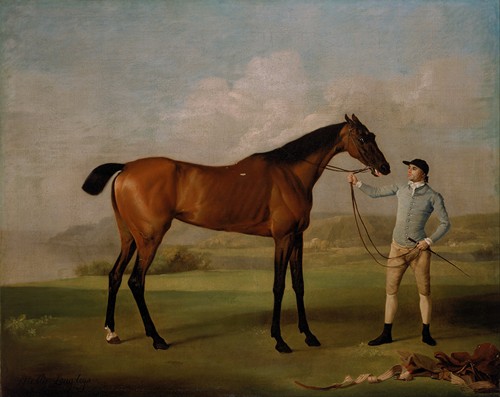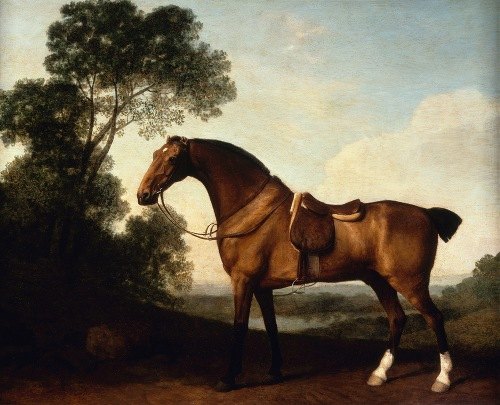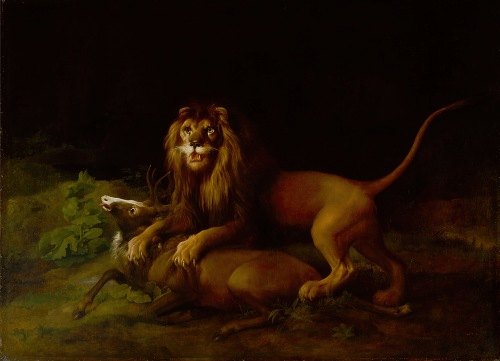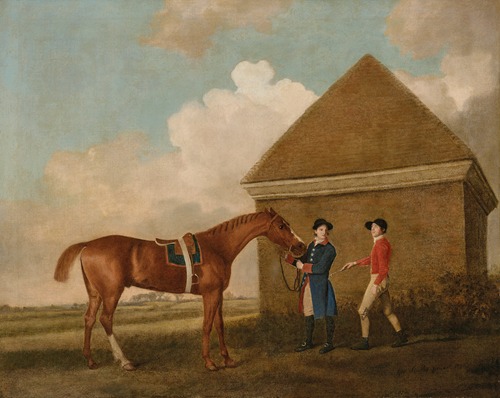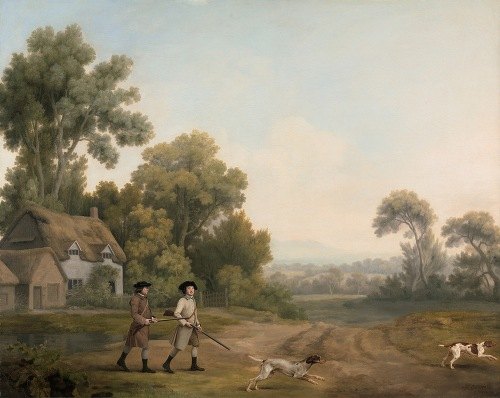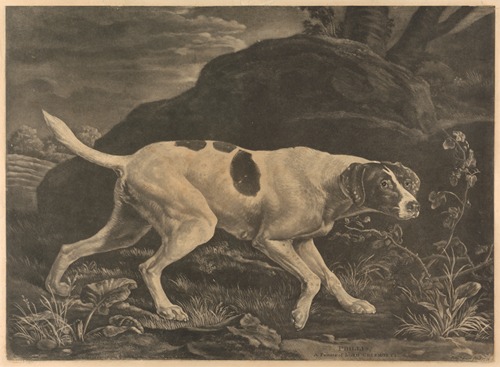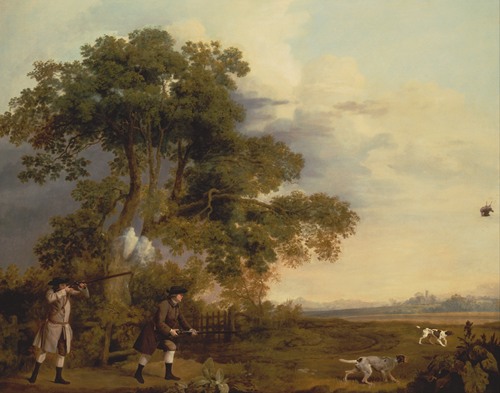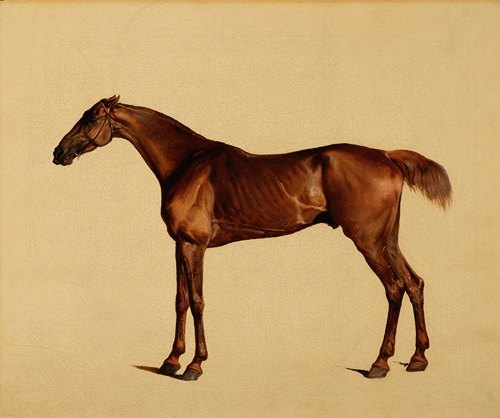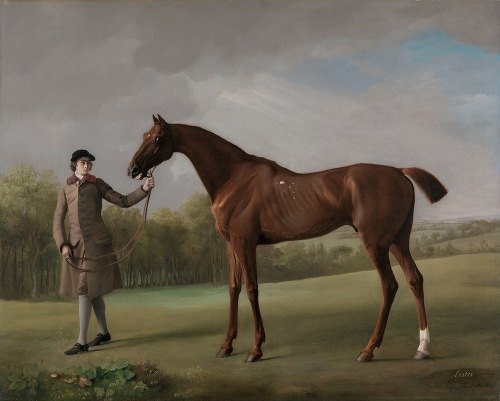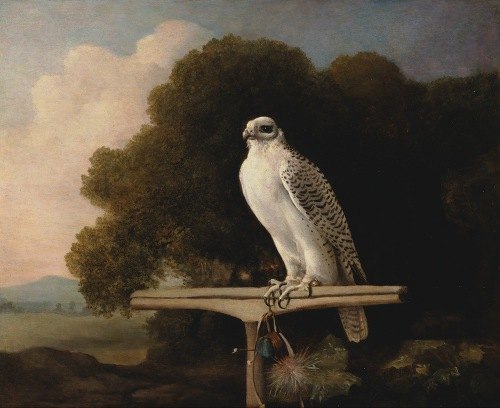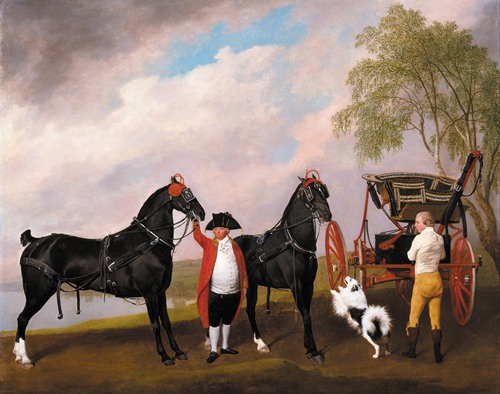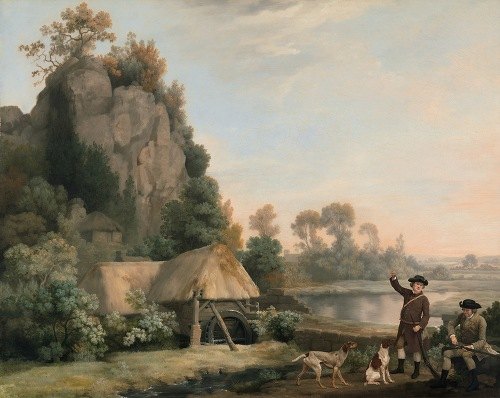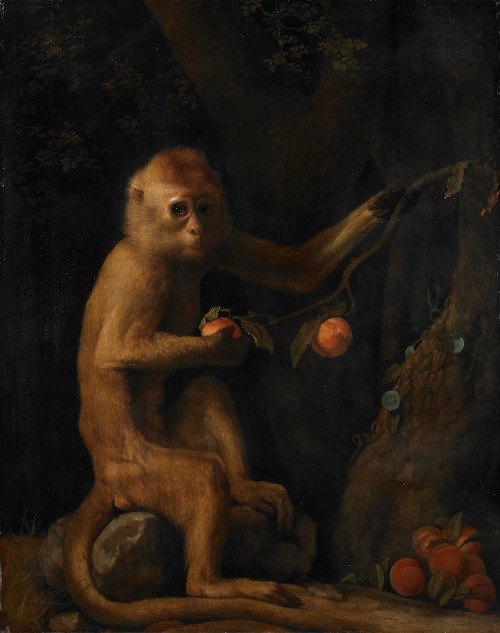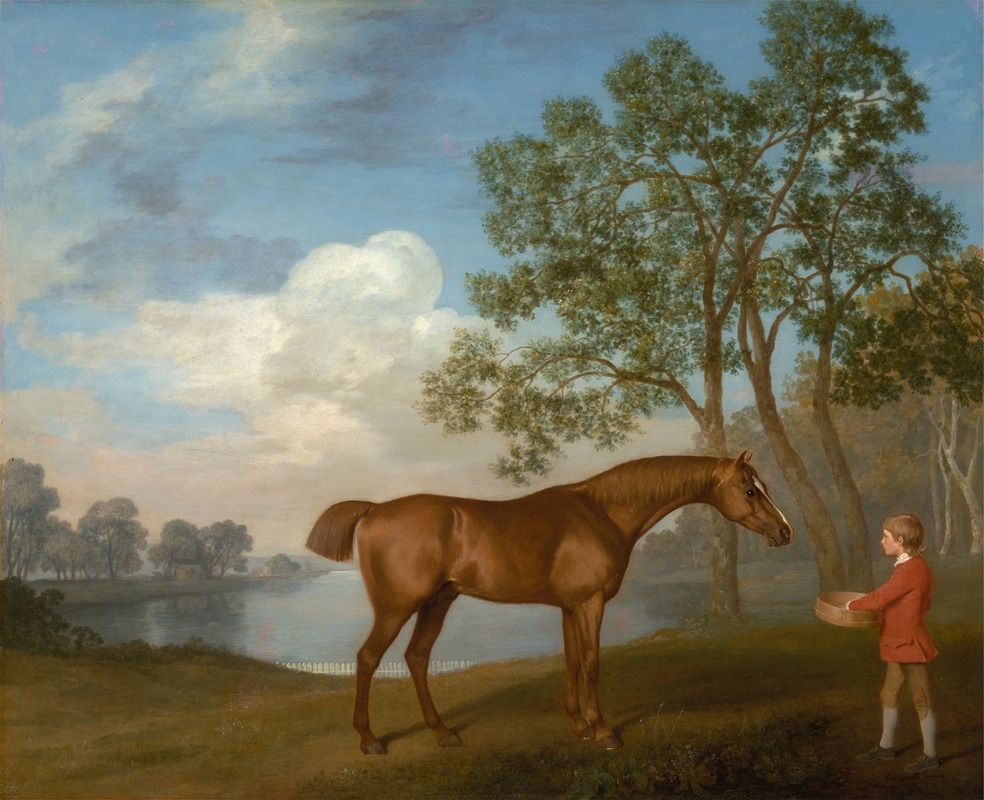
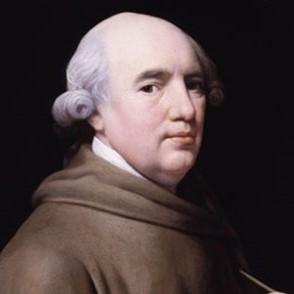
George Stubbs ARA was an English painter, best known for his paintings of horses. Self-trained, Stubbs learnt his skills independently from other great artists of the eighteenth century such as Reynolds or Gainsborough. Stubbs' output includes history paintings, but his greatest skill was in painting animals, perhaps influenced by his love and study of anatomy. His series of paintings on the theme of a lion attacking a horse are early and significant examples of the Romantic movement that emerged in the late 18th century. His painting, Whistlejacket, hangs in the National Gallery, London.
Stubbs was born in Liverpool, the son of a currier, or leather-dresser, John Stubbs, and his wife Mary. Information on his life until the age of 35 or so is sparse, relying almost entirely on notes made by Ozias Humphry, a fellow artist and friend; Humphry's informal memoir, which was not intended for publication, was based on a series of private conversations he had with Stubbs around 1794, when Stubbs was 70 years old, and Humphry 52.
Stubbs worked at his father's trade until the age of 15 or 16, at which point he told his father that he wished to become a painter. While initially resistant, Stubbs's father (who died not long after in 1741), eventually acquiesced in his son's choice of a career path, on the condition that he could find an appropriate mentor. Stubbs subsequently approached the Lancashire painter and engraver Hamlet Winstanley, and was briefly engaged by him in a sort of apprenticeship relationship, probably not more than several weeks in duration. Having initially demonstrated his abilities and agreed to do some copying work, Stubbs had access to and opportunity to study the collection at Knowsley Hall near Liverpool, the estate where Winstanley was then residing; however, he soon left when he came into conflict with the older artist over exactly which pictures he could work on copying.
Thereafter as an artist he was self-taught. He had had a passion for anatomy from his childhood, and in or around 1744, he moved to York, in the North of England, to pursue his ambition to study the subject under experts. In York, from 1745 to 1753, he worked as a portrait painter, and studied human anatomy under the surgeon Charles Atkinson, at York County Hospital, One of his earliest surviving works is a set of illustrations for a textbook on midwifery by John Burton, Essay towards a Complete New System of Midwifery, published in 1751.
In 1754 Stubbs visited Italy. Forty years later he told Ozias Humphry that his motive for going to Italy was, "to convince himself that nature was and is always superior to art whether Greek or Roman, and having renewed this conviction he immediately resolved upon returning home". In 1756 he rented a farmhouse in the village of Horkstow, Lincolnshire, and spent 18 months dissecting horses, assisted by his common-law wife, Mary Spencer. He moved to London in about 1759 and in 1766 published The anatomy of the Horse. The original drawings are now in the collection of the Royal Academy.
Even before his book was published, Stubbs's drawings were seen by leading aristocratic patrons, who recognised that his work was more accurate than that of earlier horse painters such as James Seymour, Peter Tillemans and John Wootton. In 1759 the 3rd Duke of Richmond commissioned three large pictures from him, and his career was soon secure. By 1763 he had produced works for several more dukes and other lords and was able to buy a house in Marylebone, a fashionable part of London, where he lived for the rest of his life.
A famous work, Whistlejacket, a painting of the thoroughbred race horse rising on his hind legs, commissioned by the 2nd Marquess of Rockingham, is now in the National Gallery in London. This and two other paintings carried out for Rockingham break with convention in having plain backgrounds. Throughout the 1760s he produced a wide range of individual and group portraits of horses, sometimes accompanied by hounds. He often painted horses with their grooms, whom he always painted as individuals. Meanwhile, he also continued to accept commissions for portraits of people, including some group portraits. From 1761 to 1776 he exhibited at the Society of Artists of Great Britain, but in 1775 he switched his allegiance to the recently founded but already more prestigious Royal Academy of Arts.
Stubbs also painted more exotic animals including lions, tigers, giraffes, monkeys, and rhinoceroses, which he was able to observe in private menageries.
His painting of a kangaroo was the first glimpse of this animal for many 18th-century Britons. He became preoccupied with the theme of a wild horse threatened by a lion and produced several variations on this theme. These and other works became well known at the time through engravings of Stubbs's work, which appeared in increasing numbers in the 1770s and 1780s.
Stubbs also painted historical pictures, but these are much less well regarded. From the late 1760s he produced some work on enamel. In the 1770s Josiah Wedgwood developed a new and larger type of enamel panel at Stubbs's request. Stubbs hoped to achieve commercial success with his paintings in enamel, but the venture left him in debt. Also in the 1770s he painted single portraits of dogs for the first time, while also receiving an increasing number of commissions to paint hunts with their packs of hounds. He remained active into his old age. In the 1780s he produced a pastoral series called Haymakers and Reapers, and in the early 1790s he enjoyed the patronage of the Prince of Wales, whom he painted on horseback in 1791. His last project, begun in 1795, was A comparative anatomical exposition of the structure of the human body with that of a tiger and a common fowl, fifteen engravings from which appeared between 1804 and 1806. The project was left unfinished upon Stubbs's death at the age of 81 on 10 July 1806, in London. He was buried in the graveyard of Marylebone Church, now a public garden.
Stubbs's son George Townly Stubbs was an engraver and printmaker.
